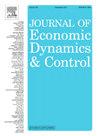错误信息的福利成本
IF 2.3
3区 经济学
Q2 ECONOMICS
引用次数: 0
摘要
社会保障福利的平均替代率约为 40%,是美国老年人退休收入的重要来源。然而,一个家庭终生领取的福利金的多少取决于许多因素,包括领取福利金的年龄和生命周期的劳动力供给决策。鉴于相关规则的复杂性,许多家庭可能对该制度的一个或多个方面缺乏了解。在这项研究中,我们使用了一个关于消费、储蓄、劳动力供给和社会保障申请决策的生命周期模型,来研究这些错误信息对福利的影响。我们的研究结果表明,误导信息会造成巨大的福利损失,尤其是当误导信息导致个人严重高估未来待遇的价值时。此外,我们的研究还表明,一个大型的公共信息宣传项目必须只让 20.1%的误报者知情,才能使信息带来的总收益超过总成本。本文章由计算机程序翻译,如有差异,请以英文原文为准。
The welfare costs of misinformation
Social Security (SS) benefits, with an average replacement rate of around 40 percent, serve as an important source of retirement income for older Americans. Yet, the size of lifetime benefits a household receives depends on many factors, including the age of benefit claim and life-cycle labor supply decisions. Given the complexity of the associated rules, many households may lack understanding of one or more aspects of the system. In this work, we use a life-cycle model of consumption, savings, labor supply, and Social Security application decisions to study the welfare impact of such misinformation. Our findings indicate significant welfare losses stemming from misinformation, especially when it causes individuals to strongly over-estimate the value of future entitlements. Additionally, we show that the Social Security Statement program, a large public information campaign, must inform only 20.1 percent of misinformed individuals in order for aggregate benefits of information to outweigh aggregate costs.
求助全文
通过发布文献求助,成功后即可免费获取论文全文。
去求助
来源期刊

Journal of Economic Dynamics & Control
ECONOMICS-
CiteScore
3.10
自引率
10.50%
发文量
199
期刊介绍:
The journal provides an outlet for publication of research concerning all theoretical and empirical aspects of economic dynamics and control as well as the development and use of computational methods in economics and finance. Contributions regarding computational methods may include, but are not restricted to, artificial intelligence, databases, decision support systems, genetic algorithms, modelling languages, neural networks, numerical algorithms for optimization, control and equilibria, parallel computing and qualitative reasoning.
 求助内容:
求助内容: 应助结果提醒方式:
应助结果提醒方式:


